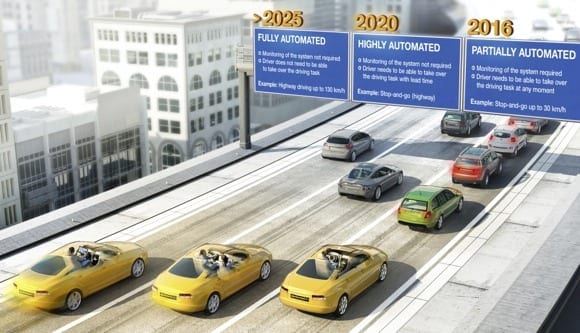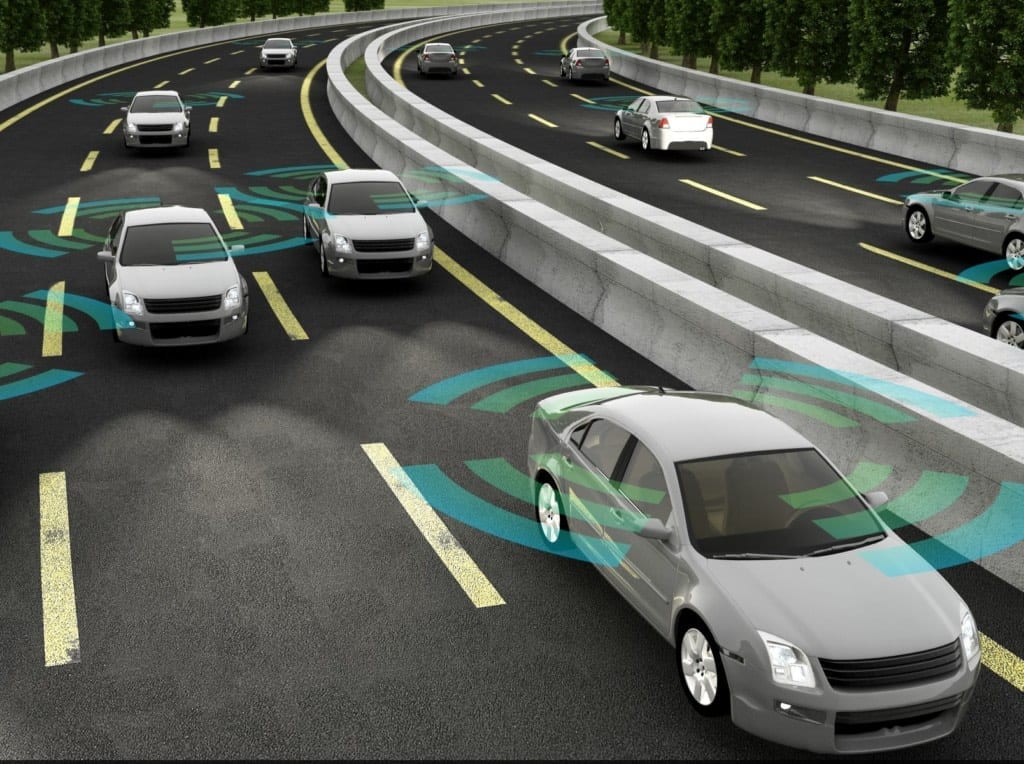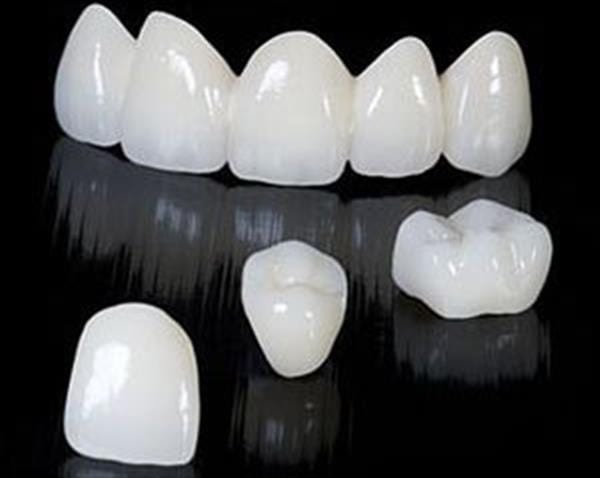
How can we push past public fear and political red tape to get to the beautiful world that awaits when no one drives anymore?
Imagine a city where cars roam free, dropping off their relaxed occupants and then sliding back into a sea of slow-moving but non-stop traffic. Cyclists weave through, unmolested, and pedestrian crossings flip to the green Walk sign often, almost magically syncing up with gaps in traffic.
The promise is seductive. You’ll never get hit by a drunk driver, a texting teen, or just someone distracted by their bad day. You’ll never have to circle the block looking for a parking space. Sidewalks will double in size because on-street parking is no longer needed outside of residential areas.
A driverless future seems more and more likely. It’s not just the success of Google’s self-driving cars, or the promise of huge environmental benefits. Today, our cars all but drive themselves already. Cruise control and anti-lock brakes have been joined by lane-detection, and some cars will put a computerized foot brakes if the car in front suddenly slows.
“Look at adaptive cruise control, lane departure warnings,” says Christian A. Strømmen, an interaction designer from Norway. “Once you get used to it, it feels so awkward driving without.”
That is, every aspect of the cars we drive “ourselves” is already automated: steering, speed, braking. Famously, Google’s self-driving cars have clocked up 1.7 million miles over six years, all without major incident.
“In more than a million miles of real-world testing, autonomous vehicles have been involved in around a dozen crashes (with no major injuries),” says John Nielsen, AAA’s Managing Director of Automotive Engineering and Repair, “all of which occurred when a human driver was in control, or the vehicle was struck by another car.”
Self-driving cars are already way better than people-piloted cars, so what’s the trouble?
“Current laws never envisioned a vehicle that can drive itself, and there are numerous liability issues that need to be ironed out,” Nielsen says. “If an autonomous vehicle gets in a collision, who is responsible? The “driver,” their insurance company, the automaker that built the vehicle, or the third-party supplier that provided the autonomous control systems?”
How will the laws adapt? And how will we adapt? People are hesitant to embrace change, but the change that driverless cars will bring to our cities and lifestyles is enormous. What will it take to get there?
Read more: Our Cities Will Be Beautiful In The Driverless Future—But First We Have To Get There
The Latest on: Vehicular automation
[google_news title=”” keyword=”Vehicular automation” num_posts=”10″ blurb_length=”0″ show_thumb=”left”]
via Google News
The Latest on: Vehicular automation
- Tesla driver said he was using Autopilot when he fatally hit a motorcycliston April 26, 2024 at 11:40 am
Tesla recalled over two million vehicles and installed an update to increase alerts in Autopilot. A 56-year-old Tesla Model S driver said he was using Autopilot when he hit and killed someone on a ...
- Proud BMW parents can now get 'birth certificates' for their (vehicular) babieson April 23, 2024 at 12:19 pm
In a day and age where traditional child-rearing has been forgone by younger generations due to financial difficulty, other living creatures and inanimate objects have taken the place as someone's ...
- Prichard Police investigating possible vehicular homicideon April 22, 2024 at 4:59 pm
PRICHARD, Ala. (WKRG) — The Prichard Police Department is investigating a possible vehicular homicide. A man was killed possibly by being struck by an unknown vehicle, according to officials.
- Tesla Driver Charged With Vehicular Homicide for Killing Motorcyclist While Browsing His Phone on Autopiloton April 22, 2024 at 4:59 pm
As the local Everett Herald newspaper reports, a 56-year-old Tesla driver was arrested and charged with vehicular homicide after hitting 28-year-old Jeffrey Nissen with his 2022 Model S ...
- Driver charged with vehicular assault, DUI after cyclist struck on Bainbridge Islandon April 18, 2024 at 5:12 pm
A 37-year-old man from Bainbridge Island was arrested for an alleged vehicular assault while driving under the influence and a hit and run after he struck a cyclist. Around 5:30 p.m. on Wednesday ...
- Crime and Public Safetyon April 18, 2024 at 8:52 am
OAKLAND — A 26-year-old San Leandro man has been charged with vehicular manslaughter in a 2022 hit-and-run crash that killed an elderly Oakland woman, according to authorities and court records.
- Teen convicted of vehicular manslaughter in fiery Woodland crashon April 17, 2024 at 5:00 pm
WOODLAND — A 13-year-old Woodland teen committed gross vehicular manslaughter — but not murder — when he caused a fiery three-car collision that killed two people and injured eight others last year, a ...
- 6 hidden risks of IT automationon April 1, 2024 at 5:00 pm
Automation is increasingly seen as a key IT strategy for competitive advantage, but pitfalls await those who fail to heed precautions. Automating business processes continues to be a high priority ...
- Woman charged with vehicular manslaughter after man hangs from moving vehicle in Hollisteron March 28, 2024 at 3:49 pm
A woman arrested by the Hollister Police Department after she allegedly drove for three-quarters of a mile with a man hanging from her vehicle hood is now facing vehicular manslaughter charges.
- Automation Bias: What It Is And How To Overcome Iton March 10, 2024 at 10:52 am
I write about strategy, leadership and Red Team Thinking. Automation bias refers to our tendency to favor suggestions from automated decision-making systems and to ignore contradictory information ...
via Bing News










